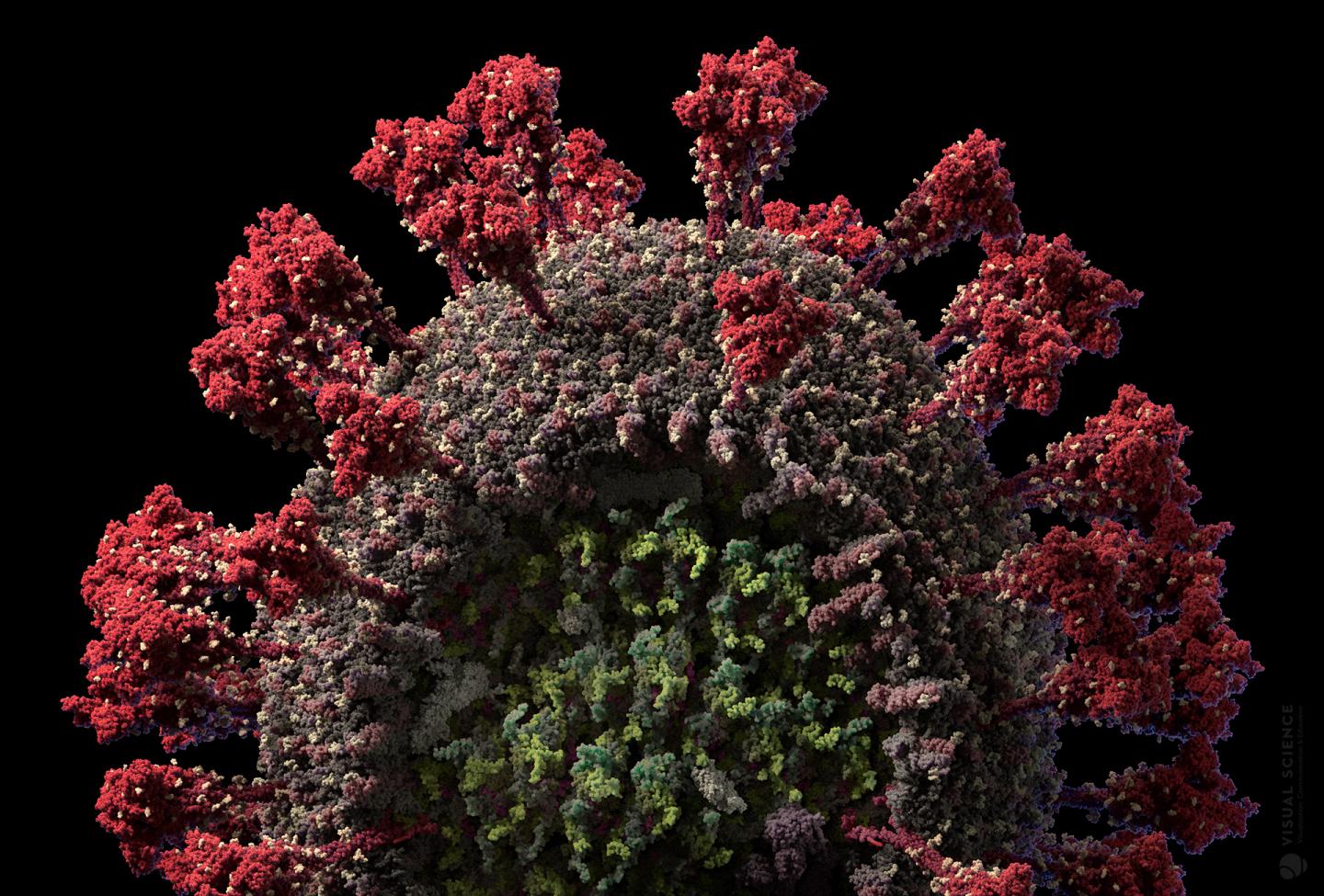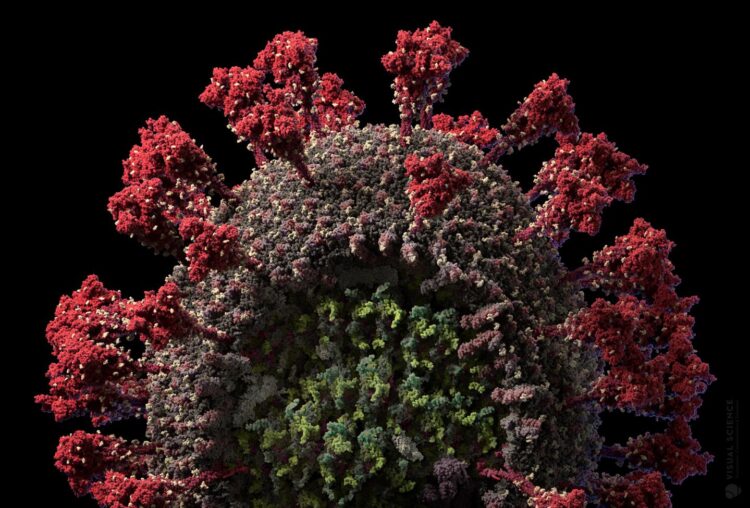Authors of the most detailed models of the Ebola, HIV, and Flu viruses created the 3D model of SARS-CoV-2 coronavirus at atomic resolution

Credit: Visual Science
The biomedical visualization studio Visual Science has created the most detailed and scientifically accurate 3D model of the full SARS-CoV-2 virus at atomic resolution. The model is based on the latest scientific research into the structure of coronaviruses and communication with virologists currently working with the virus. Molecular and computational biologists from Visual Science with help and advice from leading specialists in structural virology of coronaviruses built the most accurate model of the SARS-CoV-2 viral particle currently available.
The SARS-CoV-2 virus model is a part of Visual Science’s non-commercial Viral Park project. Its past successes include models of HIV, influenza A/H1N1, Ebola, papilloma, and Zika virions. HIV virion model has been awarded first place at the 2010 Science and Engineering Visualization Challenge (SEVC), a competition organized by Science magazine and the National Science Foundation. A year later, the 3D model of the Ebola virus received an Honorable Mention at The Vizzies 2011, an award also organized by Science magazine and the National Science Foundation (NSF).
“Visual Science employed the same techniques of structural bioinformatics used in basic research and drug development. The model reflects scientists’ current understanding of the virus’s architecture. It includes surface protein spikes that interact with the receptors on the surface of the human cell to get inside, lipid envelope with an integrated layer of matrix proteins, and a genome assembly, reconstructed based on the available scientific data”, says Ivan Konstantinov, CEO, and founder of Visual Science.
“We use published scientific information about the virus and structures of the viral components available in the Protein Data Bank as a starting point. After thorough and careful analysis of the data, we reconstruct complete models of the viral proteins and their interactions using computational biology software and then assemble the whole model of the virion based on these structures and information about the virion composition and assembly”, says Yury Stefanov, Ph.D., scientific director of the Visual Science.
The SARS-CoV-2 virus model was created by scientists and CGI specialists at Visual Science, a world leader in scientific visualization that specializes in micro- and nanoscopic objects and processes. Virologists from leading laboratories working with structural biology of coronaviruses provided valuable feedback and consultations that helped to make the model scientifically accurate.
“In their usual stunning style, the talented illustrators at Visual Science have created a model of the SARS-CoV-2 virus particle. It shows, in great detail, the intact particle with its spike glycoproteins embedded in the membrane. A cutaway view reveals the viral nucleocapsid inside the particle. These gorgeous images will enhance our understanding of the virus particle, and for the non-scientist will make even more palpable the virus that is infecting millions of people”, says Vincent Racaniello, Ph.D., Higgins Professor at the Department of Microbiology & Immunology of Columbia University, New York.
“Great work on the spike and the images! Really well done. The spikes are about as accurate as they can be given our current knowledge. The images are striking”, comments Dr. Jason S. McLellan, Associate Professor at the Molecular Biosciences Department of the University of Texas at Austin.
“Wow, that s really neat I love the model where it is open and you can see the RNP new favorite SARS-CoV 2 model”, says Dr. Benjamin Neuman, Professor, and Chair of Biological Sciences of Texas A&M University-Texarkana.
###
Additional info about the Visual Science
Models and visualizations created as part of the Viral Park project have received prizes from Science magazine and the National Science Foundation. They have appeared in leading media outlets such as Science, Nature Medicine, The New York Times, The Washington Post, Scientific American, Wired UK, Spiegel, Stern, National Geographic, GEO, and others.
Illustrations of the models have also been included in the authoritative textbook Vaccines by Stanley Plotkin and in Cell journal’s Picture Show, which coincided with the 30th anniversary of the discovery of HIV.
The goal of the Viral Park project is to popularize scientific exploration of the microworld through visualization and the opportunity to see the world’s most widespread and lethal human viruses at the atomic level.
Françoise Barré-Sinoussi, who received a Nobel Prize in 2008 for her work on the discovery of HIV, has used Visual Science’s model of this virus in presentations.
Follow Visual Science on:
Instagram: https:/
Twitter: https:/
Facebook: https:/
Media Contact
Ilyana Zolotareva
[email protected]
Original Source
http://vsci.





